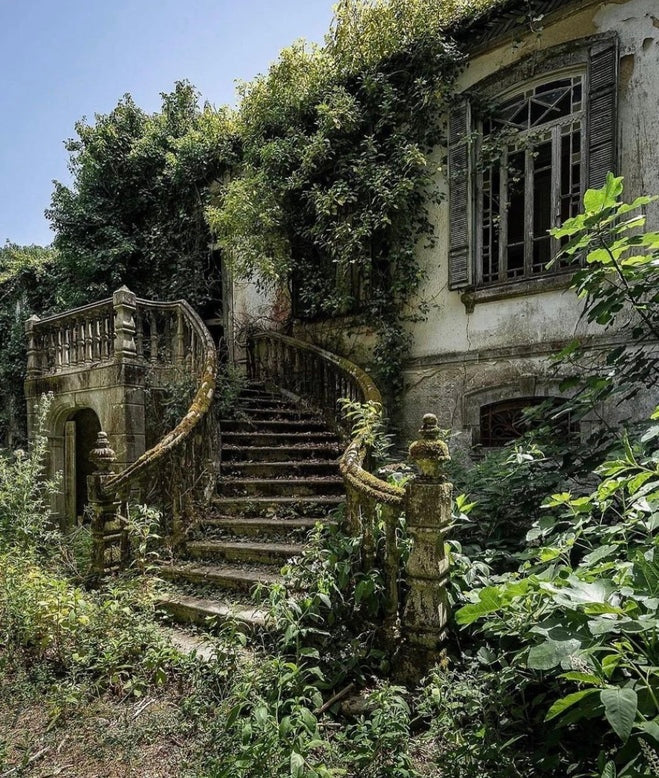Learn how to find abandoned places near you in the United Kingdom: tips and tools for uncovering hidden spots perfect for urbex and urban exploration enthusiasts.
Finding abandoned places in the United Kingdom for urban exploration can be an exciting yet challenging task. Fortunately, there are various resources and methods you can use to locate interesting and historically rich sites. Here’s a guide to finding abandoned places near you in the UK, while staying safe and legal.
1. Research Online Urbex Communities and Forums
Online communities dedicated to urban exploration are one of the best resources for discovering new locations. These forums often have user-submitted information on sites across the UK, including entry points, safety tips, and photos.
- 28 Days Later: One of the largest and most popular urbex forums in the UK, 28 Days Later hosts a wealth of information on abandoned places. Users frequently post reports, photos, and safety notes for various locations, from abandoned factories to hospitals and mansions.
- Derelict Places: Another popular UK-based urbex forum, Derelict Places is a good resource for discovering new sites and learning about others’ experiences. Many users are UK-based and post detailed reports, maps, and photos of locations.
- Facebook Groups: Search for urban exploration or urbex groups dedicated to specific areas in the UK. These groups can provide local insights and often host discussions about new and lesser-known places.
2. Use Satellite Imagery and Map Tools
Digital mapping tools and satellite imagery are useful for identifying potential abandoned sites. With tools like Google Maps and Google Earth, you can search for isolated or rundown buildings that may not be in active use.
- Google Maps: Use the satellite and street view options to scan areas that may be isolated or show signs of disrepair, such as missing roofs, overgrown vegetation, or lack of nearby traffic. You can also compare older and newer imagery in some cases to confirm if a building is abandoned.
- Historic England: The Historic England website offers a map of listed and historically significant sites across the UK. Some of these buildings are abandoned or have limited public access, making them interesting for urbex enthusiasts.
- OpenStreetMap: This community-driven mapping platform sometimes includes details on abandoned or derelict buildings. Certain users mark abandoned sites, though this information can be inconsistent depending on your area.
3. Explore Local History Websites and Databases
Many abandoned places are steeped in history, and researching the local area’s past can lead to fascinating discoveries. Historical databases and websites offer insights into abandoned sites that might not be well-known in the urbex community.
- British Listed Buildings: This website lists buildings in the UK that are protected due to historical or architectural importance. Some of these sites are abandoned or partially accessible, providing opportunities for urbex within legal boundaries.
- National Trust and English Heritage Sites: While most of these sites are managed and maintained, some offer access to ruins or abandoned structures. Places like Whitby Abbey and Tintern Abbey are popular examples, and the National Trust occasionally lists old, derelict properties as part of its portfolio.
- Local Council Records: Councils often keep records of properties scheduled for demolition, redevelopment, or preservation. You may find information on neglected or abandoned sites that are open to the public or accessible with permission.
4. Use Urbex and Photography Apps
Certain apps and websites are designed specifically for explorers and photographers looking for unique locations, including abandoned or derelict sites. These tools can help you discover lesser-known spots.
- Abandoned Places: Apps like Abandoned Places or Urbex People feature databases of abandoned locations with user-submitted photos and coordinates. While coverage may vary, you may be able to find interesting places based on your location.
- Instagram and Photography Apps: Searching for hashtags like #urbexUK, #abandonedUK, or #forgottenplacesUK can lead you to stunning photos of locations in the UK. Many photographers tag their locations, allowing you to pinpoint spots near you.
5. Check Local News Reports and Historical Publications
Abandoned sites are sometimes mentioned in local news, particularly if they are considered a public hazard or have a significant history. News archives or recent reports on redevelopment projects can reveal places currently in a state of neglect.
- Local Newspapers: Searching the archives of local newspapers can yield information on buildings or areas recently vacated or slated for redevelopment. Keywords like "abandoned," "derelict," "closed," or "forgotten" combined with your location can be helpful.
- Books and Publications on Local History: Many towns and cities in the UK have publications that cover local history, including notable abandoned buildings or forgotten sites. These can sometimes be found at local libraries or through historical societies.
6. Visit Historical Sites and Ruins Open to the Public
If you’re interested in places that are legally accessible, there are plenty of historical ruins and abandoned structures open to the public. These sites offer a safe and legal way to explore abandoned places while enjoying the historical significance.
- Publicly Accessible Ruins: Historic England, National Trust, and English Heritage manage many historic ruins across the UK that are open for public visits. Sites like Corfe Castle in Dorset, Fountains Abbey in Yorkshire, and St. Dunstan-in-the-East in London are popular ruins to explore and photograph.
- Local Heritage Trails: Many towns and cities have heritage trails that include abandoned or semi-abandoned buildings, such as mills, old churches, or factory sites. Checking local tourist boards or historical societies can help you find these trails.
7. Network with Local Urbex Enthusiasts
Networking with fellow urbex enthusiasts is a great way to discover abandoned places that may not be widely known. Many urbex communities operate offline as well, organizing meet-ups, tours, or group expeditions.
- Meetups and Group Explorations: Some urban exploration groups host in-person events, which can be a fantastic opportunity to learn from more experienced explorers while visiting sites as a group.
- Photography Clubs and Historical Societies: Many historical societies and photography clubs have members who know about local abandoned places and may be willing to share locations or tips with you.
Discover the best abandoned places with our maps !
Are you looking for the best urbex locations near you? Look no further! Whether you're a seasoned urban explorer or a curious hobbyist, our maps are full of abandoned places to explore. Discover our Maps !















